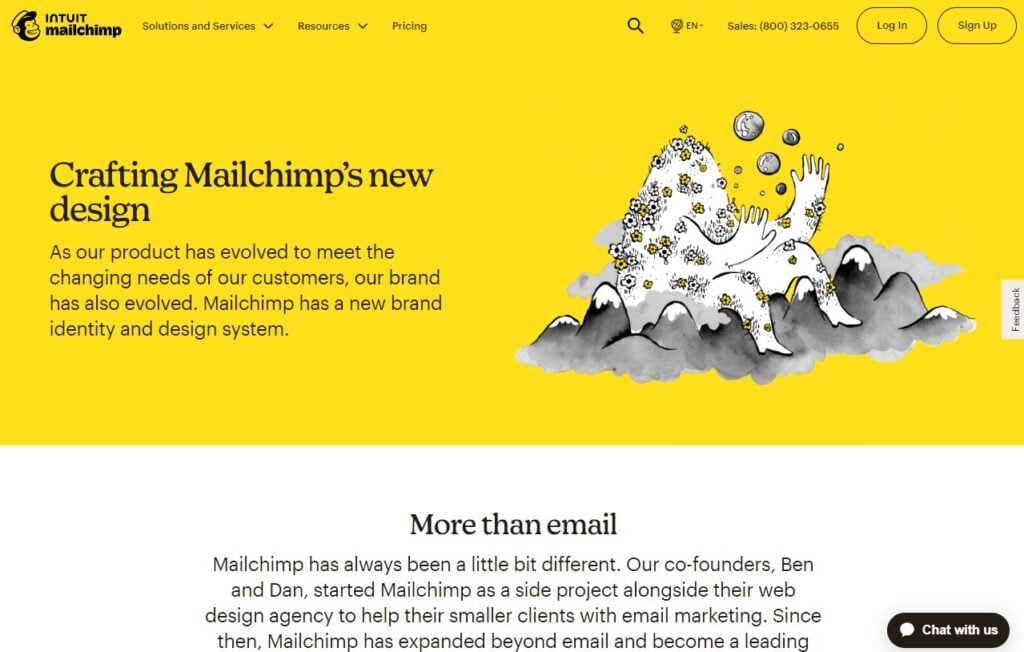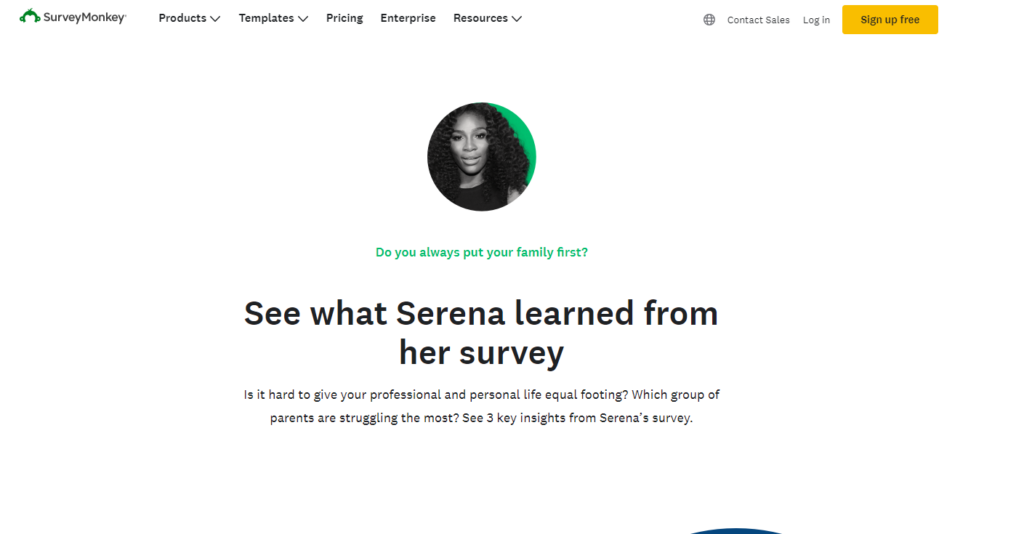Here’s a fun exercise: how many SaaS brands can you name off the top of your head? For me, the biggest SaaS companies—Salesforce, HubSpot—come to mind, as well as others with memorable branding, like Mailchimp, Monday.com, and SurveyMonkey. What do all these companies have in common? A strong brand marketing strategy.
Building a brand marketing strategy is tough; executing it consistently over time is even tougher. But it pays off: 46% of customers would pay more to buy from brands they trust. Despite the benefits, less than 10% of B2B companies have consistent branding.
In this article, I’ll walk through the essentials: what brand marketing is, how branding is different from marketing, and how to build a brand marketing strategy that improves brand equity and delivers results. I’ll also explore examples of SaaS companies with strong brand marketing to give you inspiration for your own brand marketing initiatives.
What is Brand Marketing?
Your brand has inherent value. In fact, some brands have immense value measured in billions of dollars. Apple, for example, has a brand value of over $480 billion.
Brand marketing is the sum total of activities you engage in to create this value. By making sure your brand’s story, values, and identity is known to your target audience, you build familiarity. Done correctly, this distinguishes your brand from competitors, leading to growth driven by a passionate audience of ideal customers.
Brand marketing isn’t just about colors and logos. It’s also about the intangibles: your tone of voice and values, for example. 82% of consumers would like a brand’s values to match their own, and 88% percent of consumers say authenticity is key in their decision to support brands.
Put all this together, and you have brand marketing: not just your product, not just your logo or tagline, but the overall brand story you communicate and your brand’s ability to resonate with your audience on a deep level.
Branding Vs Marketing
Looking at it as stages in your marketing plan, branding comes before advertising or marketing, covering the values and voice that represent the core of who you are. Meanwhile, marketing covers the tactics that attract customers.
More specifically:
- Branding involves defining your brand identity and establishing what your business stands for. It's about determining your brand's personality, voice, logo, design system, mission, and core values. Branding provides direction for marketing efforts.
- Marketing is about promoting your brand and products to attract interest and customers. This includes ads, social media, PR, email, content marketing, and other tactics to build an audience.
While marketing takes place in the context of a specific campaign, branding is more holistic. Your customers’ entire experience—from onboarding to customer support interactions—affects your brand image.
When is Brand Marketing most Successful?
Brand marketing is at its most successful when you use it to create an authentic connection between your brand and its target audience; when you give it sufficient time to build brand equity; and when you recognize that the impact of brand marketing is not always measurable by the normal digital marketing KPIs.
What qualifies as savvy brand marketing for one company—and a PR disaster for another—depends entirely on the audience. Wendy’s, the fast-food chain, has a famously sassy social media brand voice to help connect the brand with its younger customers. Meanwhile Tesla, the carmaker, strapped one of its cars to a rocket and launched it into space to emphasize the carmaker’s forward-thinking mentality. Neither of these approaches would make sense for a company with a more traditional brand image, like Oracle.
While combative social media accounts and flashy PR stunts are memorable, they’re far outnumbered by all the small things that go into building a strong brand: a sense of mission and purpose, a flawless customer experience, and consistent brand activation campaigns combined with content marketing over the years. The success of these efforts is measured in years, not in days or weeks.
Building a Brand Marketing Strategy
The seven steps detailed here provide a blueprint for developing an impactful brand marketing strategy that captures your audience’s attention and turns customers into brand advocates.
1. Understand your Brand Purpose
Simply put, your brand needs to exist for some reason other than just making money. Uber’s original brand purpose, for example, was “to make transportation as reliable as running water everywhere, for everyone.”
For smaller brands and startups, a brand purpose might feel like a “nice-to-have”—but it’s critical for brands of all sizes. Consumers expect 53% of small businesses and 64% of medium-sized businesses to serve a purpose.
2. Craft Your Brand in Detail
Humans have evolved to make split-second decisions about whether to like or trust others. Researchers at Princeton found that our brains decide if someone is trustworthy within a tenth of a second.
That means your brand’s fundamentals need to first connect with your potential customers on a gut level to “get you in the door”—so that later, you get a chance to tell your full brand story.
To craft your brand in detail, focus on:
- Mission statement: Your long-term ambitions.
- Values: The principles that guide your brand.
- Personality: The brand voice you use in your marketing
- Positioning: How you differentiate from competitors.
- Logo: The visual identity that represents your brand.
- Color palette: A set of colors that reflects your brand’s personality.
- Fonts: Typography that fits your voice.
- Imagery: Defining the photos and illustrations that fit your brand.
Being consistent with these fundamentals pays off. For example, companies that use a signature color consistently can increase brand recognition by 80%.
3. Identify your Target Audience
64% of consumers feel an emotional connection to their favorite brands. Your target audience should be full of people who share your values and are likely to turn into repeat buyers.
Start by creating personas for your ideal customers:
- Demographics like job title, income level, location, and age bracket.
- Where they consume content and spend time online.
- How they prefer to engage with brands.
- Motivations for buying your product.
- Pain points, values, and objections.
Gaining clarity on your ideal customers and target audience helps you define a branding strategy to match their interests, needs, and—especially—their values.
4. Develop your Brand Positioning
Brand positioning describes the process of your differentiation from competitors in the minds of your target market.
Some examples:
- Low-cost: The most affordable pricing.
- Luxury: A premium experience.
- Innovative: Constant improvement and innovation.
- Expert: Thought leadership in your niche.
- Customer-centric: Exceptional service and support.
Determine what makes your brand unique or better than alternatives, then communicate that to your audience. Your brand positioning comes in handy if planning a brand collaboration.
To help you track the results of your brand positioning, gauge your brand’s reputation, and correct course when needed, consider using brand protection software.
5. Create your Messaging Strategy
With your brand purpose, personality, positioning, and audience research in hand, you can develop your messaging strategy.
Your brand messaging may differ dramatically based on your audience and brand personality.
For example, Zendesk created a website for a fake band called “Zendesk Alternative”—complete with a mini-documentary featuring fake band members—to capitalize on Google searches for people looking for an alternative to their software. That wouldn’t work for a more traditional SaaS brand like Adobe.
6. Refine your Content Marketing Strategy
Blogs, videos, podcasts, and other types of content allow you to share value while building brand awareness and strengthening your SEO presence. Your content strategy should focus primarily on:
- Educating target audiences on topics they care about.
- Establishing your company as a thought leader.
- Addressing customer pain points with helpful advice.
- Consistently conveying your brand’s purpose and personality.
7. Run, Test, and Optimize Marketing Campaigns
Your digital campaigns need to convey your brand values. But beyond that, keep experimenting with the latest marketing tactics to see what resonates with your customer base.
For example, 80% of brand marketers use social ads to increase brand awareness. Other marketing channels like paid ads, email, influencer partnerships, events, and PR activities are all fair game. Don’t be afraid to test new channels to find out what works. Try creative approaches that fit with your brand voice, and measure success by analyzing performance data and using brand management software to measure your audience’s perception of your brand.
Examples Of Great Brand Marketing
You don’t need a massive brand like Coca-Cola or Nike to benefit from brand marketing. Let's look at some stellar examples of effective brand marketing in the SaaS world:
Mailchimp

Mailchimp, with its lighthearted monkey mascot, brings a major dose of personality to the traditionally stodgy email space. The 2018 rebranding of Mailchimp moved the brand from “fun” to “quirky,” with illustrations that remind me of a Roald Dahl book.
From a brand marketing perspective, the company has displayed a consistent willingness to try new mediums and poke fun at itself. This was perhaps best displayed in Mailchimp’s ads on the viral 2014 podcast Serial, which features regular people reading—and mispronouncing—Mailchimp’s brand name.
Monday.com

Monday.com video ads often show up when I watch YouTube, which is why they were top-of-mind for me when making this list. (Hey—that’s brand marketing in action)! They rely on a range of video ad techniques for brand awareness, ranging from stop-motion animation to snappy 1-on-1 interviews with users.
My favorite Monday.com video is titled “Say goodbye to inefficient shoulder tapping and hello to efficiency.” It manages to be funny and relatable while also helping the brand stand for something bigger than itself: the video shows an office worker tapping annoyed co-workers on the shoulder to ask a question, then presents Monday.com as a better alternative.
Monday.com is also notable for its fun, energetic, colorful visuals and its prolific content marketing focusing on productivity tips.
SurveyMonkey

A partnership between world-class tennis legend Serena Williams and survey software SurveyMonkey? You better believe it. Serena Williams, who joined SurveyMonkey’s board in 2017, ran her own “influencer” survey and starred in a video ad for the brand.
So what’s going on here? SurveyMonkey—which attempted a 2021 rebrand to “Momentive” only to revert back to “SurveyMonkey” two years later—has been working to reconcile its consumer-friendly branding with its increasingly B2B audience. To help with this shift, SurveyMonkey has also commissioned surveys from high-profile B2B influencers like Arianna Huffington, Draymond Green, and LinkedIn chairman Jeff Weiner.
The lesson? Even brands with playful names can straddle the line between “fun” and “serious” by taking a nuanced approach to the rest of their brand identity and marketing messaging.
Growing Your Brand For The Long Haul
Brand marketing is tough to pull off well: you not only have to align your organization around the values, identity, and messaging that appeal to your target audience—you also have to keep it up for years, often without many direct metrics of success.
But companies that create a brand marketing strategy and stick to it are rewarded. Brand awareness is just the start: they also get customer loyalty, increased revenue, and a brand that grows in value over time.
For more on brand marketing, be sure to read our guide to brand storytelling in B2B marketing. And while you’re at it, don’t forget to subscribe to The CMO newsletter for the latest trends, technology, and tools in marketing.


